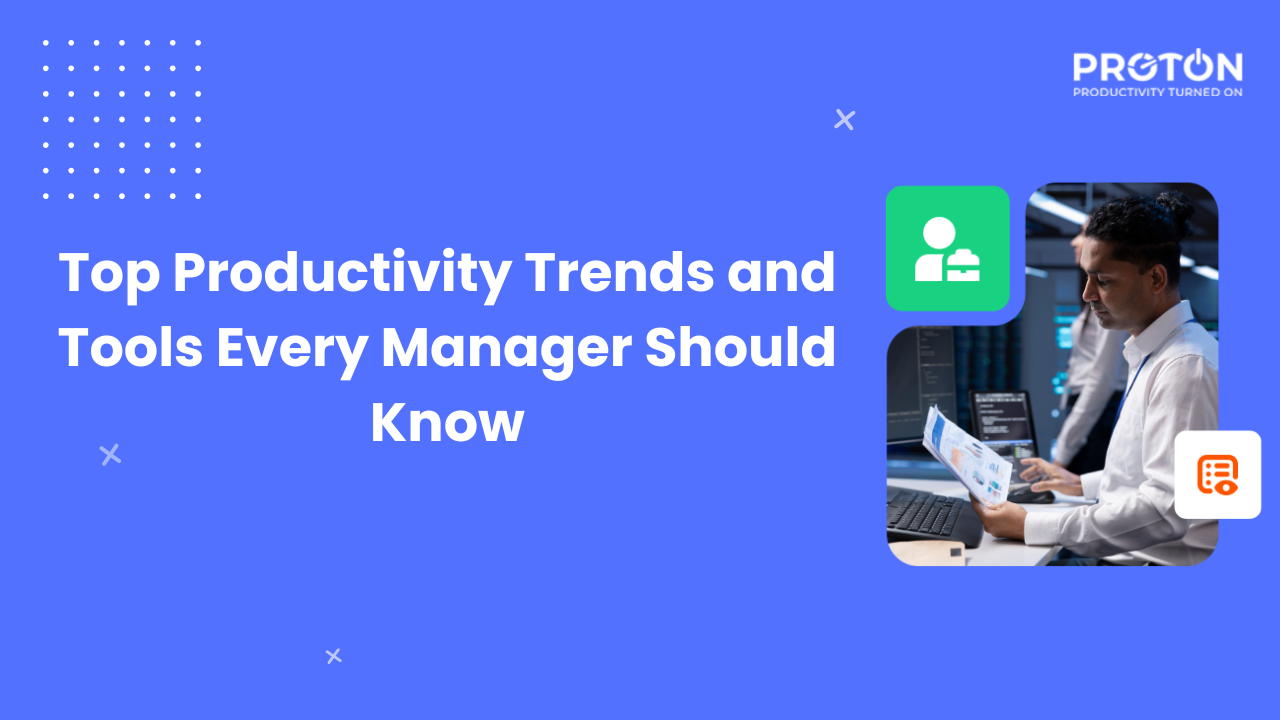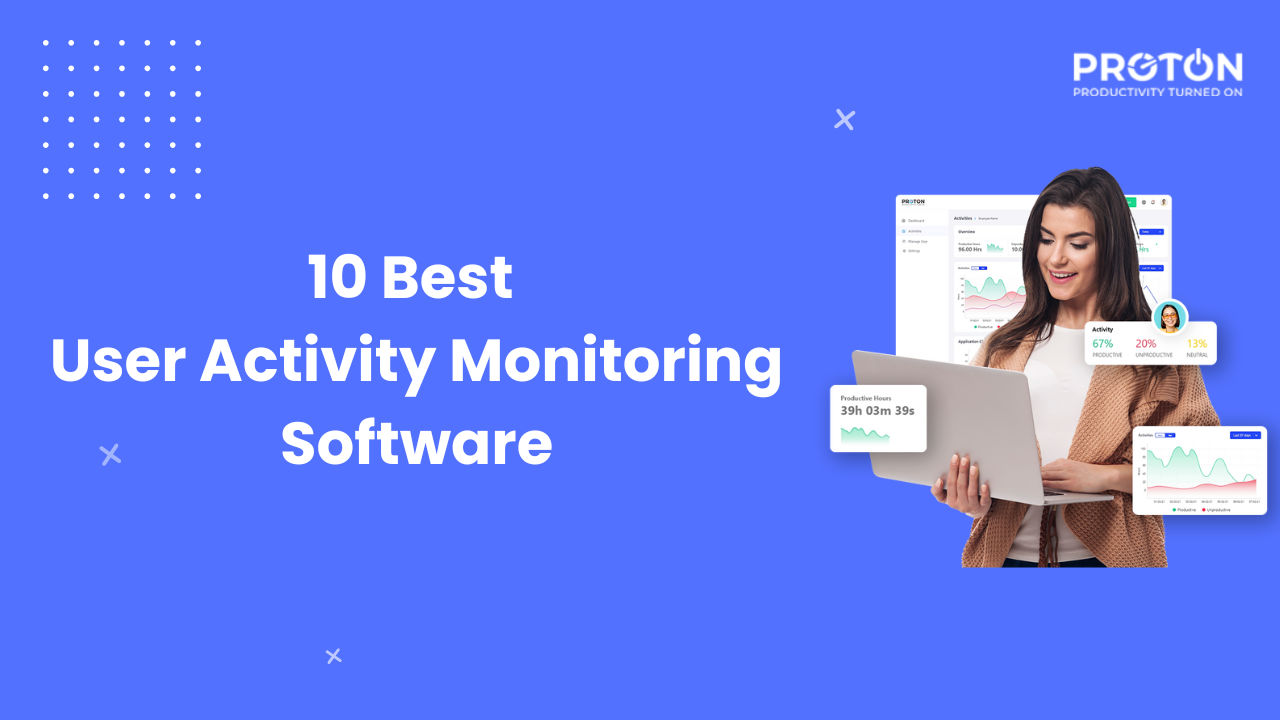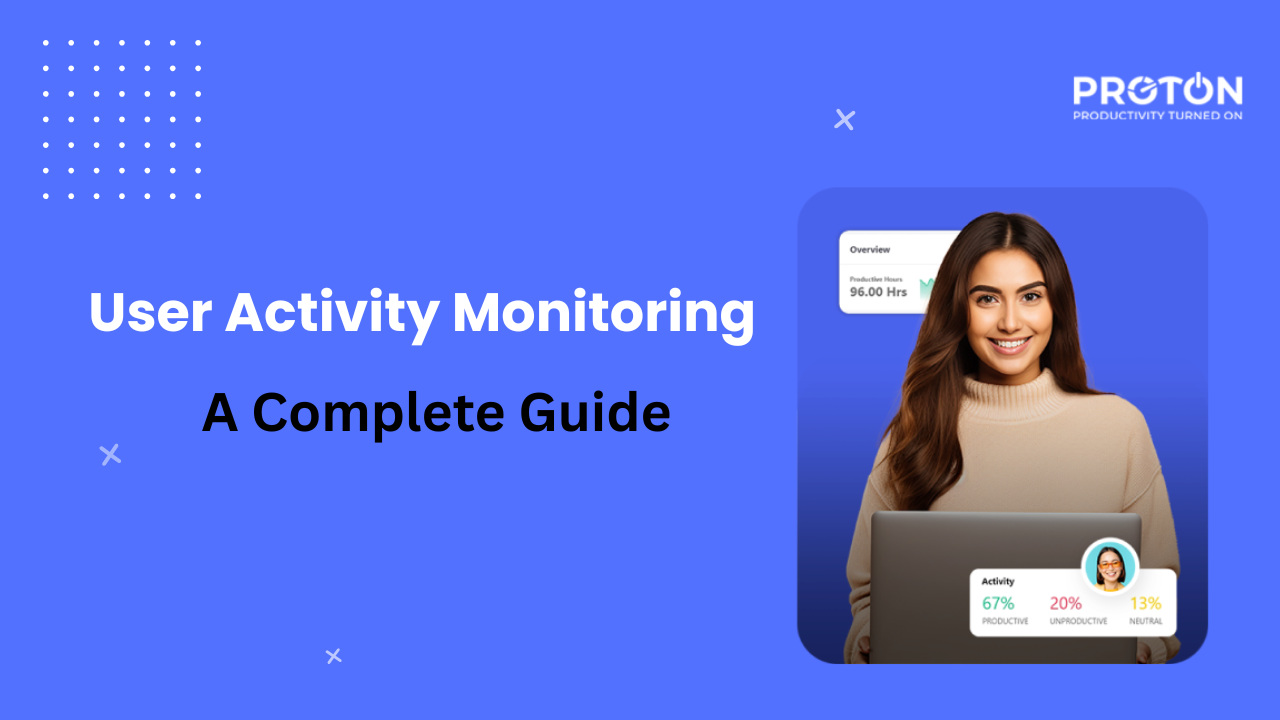Tracking employee productivity does not have to feel like employees are always under the microscope. Over-supervision can suppress creativity, weaken trust, and push people to leave.
To track employee productivity effectively, businesses should use respectful methods and clear goals that will empower staff.
In this blog, we will be exploring a balanced approach on how to effectively use relevant software to track employee productivity without micromanaging and also discover modern approaches to employee tracking productivity that respect autonomy while driving performance.
Why Micromanagement Backfires
Micromanagement may seem to be harmless, but when done excessively can create anxiety and resentment among employees.
- Employees may feel they are not trusted or valued, which can lower engagement and ownership.
- Constant check-ins can make them feel controlled, where they start losing curiosity and innovation
In short, micromanaging damages the productivity and efficiency of employees
Signs You are Micromanaging Without Realizing It
If you find yourself doing these, it means you have entered the world of micromanagement
- You require frequent updates on every small task being performed.
- You feel like there is a need to authorise every email, every data entry, every decision.
- Tasks are broken down into so many micro steps rather than setting objectives.
- You look for mistakes rather than helping out.
- You assign tasks, but then prefer doing it yourself, or you check the work obsessively.
- You require being CC’d on every email sent.
These behaviours can also reflect good intentions, like being responsible, accountable, or can also be anxiety. However, when done overly can damage employee morale.
Recognising micromanaging habits and working to eliminate them is essential for fostering trust, autonomy, and a healthier work environment.
Best Practices to Track Productivity Respectfully
When planning on how to track employee productivity respectfully, these are some of the best practices that can be followed.
- Set transparent goals and expectations. Have a clear picture of what the outcome of each project will be. When employees are clear on what to achieve, work gets done without constant check-ins. This is a crucial first step in understanding how to track productivity of an employee effectively.
- Schedule regular check-ins that are purposeful.
- Use transparent employee productivity tracking software that monitors employee productivity without spying on them. You can also use an employee productivity tracking template to establish clear performance benchmarks and streamline your tracking process. Using tools that employees trust enables you to focus on the best way to track employee productivity rather than being intrusive.
- Be open to your team by telling them why their productivity is being tracked and how the data will be used. This will make them feel involved.
- Rather than explaining how to do each step, allow them to figure out the best solution and then use the data to evaluate outcomes, provide feedback, and provide support.
These practices will allow employees to stay productive as they feel involved and respected, even though their work is being measured.
Recommended Tools & Features
If you are searching for an employee productivity tracker software or a free employee productivity tracker, always choose tools that focus on how to keep track of employee productivity rather than choosing heavy surveillance tools.
One of the best software for tracking employee productivity is Proton, a free software to track employee productivity. Its key features are the following:
- Automated time tracking feature allows managers to know where exactly work hours go.
- Its activity monitoring tool highlights apps and sites that contribute to productivity and those that cause distraction.
- Customisable transparency options are available without being intrusive. For example, it has a screenshot and screen recording feature that is designed for transparency, with settings to prevent micromanaging.
- Managers can use dashboards to identify team trends and issues, helping them improve productivity.
Proton also provides a free trial so teams can explore its employee productivity tracking application.
Creating a Culture of Trust and Transparency
If there is no trust, then nothing can compensate for it. If an organisation wants to genuinely track employee productivity, it should be transparent and supportive.
- Trust is vital as no software or policy can replace it in a workplace. It is the foundation of a successful team in terms of productivity. Without trust, even the most advanced employee productivity tracking application can turn out to be of no use.
- A transparent and supportive culture in the organisation will reduce hostility towards employee productivity tracking. If employees feel safe as well as appreciated at work, they are more likely to accept this tracking software as helpful and not something that controls them.
- Managers should ensure clear communication where goals are regularly set, honest feedbacks are provided, and productivity insights are shared. Clear, frequent communications make sure that employees understand expectations and work towards contributing to the objectives.
- Allowing employees to make decisions increases creativity and motivates them to contribute more. When they feel trusted enough to handle their responsibilities and time, they become more committed to their roles.
- Tracking should be done to identify workflow, resolve issues, and provide support, not micromanage employees.
Tools like Proton provide dashboards that allow self-monitoring and personal goal-setting. Teams can access relevant performance metrics. Open tracking of this type removes fear and encourages commitment towards a mutual goal.
Conclusion
Tracking employee productivity without micromanaging requires following the right methods. Focusing on goals, providing clarity, and using the right tools can increase employee efficiency, eliminating micromanaging.
To track employee productivity software like Proton can be considered, whose employee productivity tracker automates monitoring, provides detailed reports and dashboards, are one of the best solutions available. In the end, when accountability and trust become part of the organisational culture, it reveals the hidden potential in every employee.
FAQs
How can I track employee productivity without micromanaging?
First, set clear goals and use automated tools to track hours and tasks. Share the results with employees and use regular check-ins to solve issues. This will build trust and keep teams productive without having to micromanage them.
What are the signs of micromanagement in the workplace?
Micromanaging means you do not trust your employees/team. Requiring constant updates, having control over every small task and redoing work are some of the main signs of micromanagement in the workplace. Managers who want productivity set clear goals and let the team handle the rest.
What tools can help monitor productivity without screen surveillance?
Track productivity with smart tools rather than constant monitoring. To track employee productivity, software like Proton is ideal. It uses AI tracking employee productivity methods to produce smart insights into how time and tasks are managed, helping teams work better. It protects privacy and focuses mainly on output. The major goal is to gather useful data while respecting employee privacy.
Can setting clear goals reduce the need for close monitoring?
Yes. A clear goal reduces the need to micromanage. When employees are very clear with the goals and objectives, you can focus on the outcome rather than every small detail.
How do I build trust while still keeping teams accountable?
Be transparent with the team about why you track their performance and involve them. This builds trust. Trust builds accountability. Give them freedom to make decisions and provide support rather than control. When they feel respected, they become responsible and motivated.
Is it possible to measure productivity for creative or non-quantifiable roles?
For Creative and non-quantifiable roles, tracking should be flexible. Focus on outcomes rather than hours spent. Use goals, tracking tools and provide feedback, but remain flexible. Trust and transparency help creative teams do their best work.
How often should I check in with employees about performance?
You should check in regularly but not constantly. Consider updating daily for active work, and weekly or monthly meetings to track progress would suffice.
What is the difference between healthy oversight and micromanagement?
Micromanaging is monitoring minute by minute, whereas healthy oversight means guiding without micromanaging. You need to set clear goals, check progress and support whenever needed. Use tracking data to support and help rather than control.
Recommended Readings:
- 10 Best User Activity Monitoring Software in 2025
- User Activity Monitoring 101: A Complete Guide
- Balancing Work and Life: Time Management Tips for Remote Employees
- Workforce Analysis 101: Understanding the Basics and Benefits
- Why Employee Monitoring Software is Crucial in 2025
- How to Introduce Productivity Monitoring in Your Organization: A Comprehensive Guide
- 10 Best Employee Productivity Tracking Tools 2025


